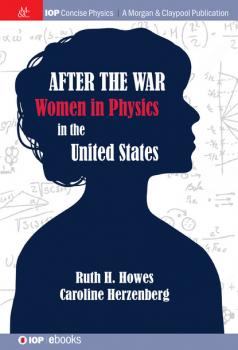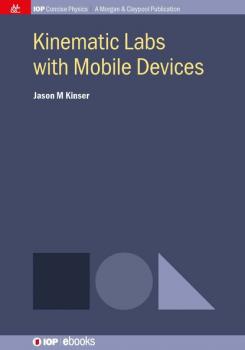Физика
Различные книги в жанре ФизикаComputation in Science
This book provides a theoretical background in computation to scientists who use computational methods. It explains how computing is used in the natural sciences, and provides a high-level overview of those aspects of computer science and software engineering that are most relevant for computational science. The focus is on concepts, results, and applications, rather than on proofs and derivations. The unique feature of this book is that it “connects the dots between computational science, the theory of computation and information, and software engineering. The book should help scientists to better understand how they use computers in their work, and to better understand how computers work. It is meant to compensate a bit for the general lack of any formal training in computer science and information theory. Readers will learn something they can use throughout their careers.
After the War
This book examines the lives and contributions of American women physicists who were active in the years following World War II, during the middle decades of the 20th century. It covers the strategies they used to survive and thrive in a time where their gender was against them. The percentage of PhD’s in physics has risen for 6% in 1983 to 20% in 2012 (an all-time high for women). By understanding the history of women in physics, these gains can continue. It discusses to major classes of women physicists; those who worked on military projects, and those who worked in industrial laboratories and at universities largely in the late 1940s and 1950s. While it includes minimal discussion of physics and physicists in the 1960s and later, this book focuses on the challenges and successes of women physicists in the years immediately following World War II and before the eras of affirmative actions and the use of the personal computer.
Discrete Quantum Mechanics
After a quarter century of discoveries that rattled the foundations of classical mechanics and electrodynamics, the year 1926 saw the publication of two works intended to provide a theoretical structure to support new quantum explanations of the subatomic world. Heisenberg's matrix mechanics and Schrodinger’s wave mechanics provided compatible but mathematically disparate ways of unifying the discoveries of Planck, Einstein, Bohr and many others. Efforts began immediately to prove the equivalence of these two structures, culminated successfully by John von Neumann’s 1932 volume «Mathematical Foundations of Quantum Mechanics.» This forms the springboard for the current effort. We begin with a presentation of a minimal set of von Neumann postulates while introducing language and notation to facilitate subsequent discussion of quantum calculations based in finite dimensional Hilbert spaces. Chapters which follow address two-state quantum systems (with spin one-half as the primary example), entanglement of multiple two-state systems, quantum angular momentum theory and quantum approaches to statistical mechanics. A concluding chapter gives an overview of issues associated with quantum mechanics in continuous infinite-dimensional Hilbert spaces.
Kinematic Labs with Mobile Devices
As technology advances, education has expanded from the classroom into other formats including online delivery, flipped classrooms and hybrid delivery. Congruent with these is the need for alternative formats for laboratory experiences. This explosion in technology has also placed in the hands of a majority of students a sensor suite tucked neatly into their smartphones or smart tablets. The popularity of these devices provides a new avenue for the non-traditional kinematic lab experience. This book addresses this issue by providing 13 labs spanning the common topics in the first semester of university-level physics. Each lab is designed to use only the student's smartphone, laptop and items easily found and big-box stores or a hobby shop.
Each lab contains theory, set-up instructions and basic analysis techniques. All of these labs can be performed outside of the traditional university lab setting and initial costs averaging less than $8 per student, per lab, excluding the smartphone and laptop. This text is not intended to replace in-lab experiences, but instead is designed to be a guide for those situations where an in-lab experience is not feasible. Instructors should feel free to modify the labs and the author looks forward to seeing the modifications and successes achieved.
Nonlinear Optics of Photonic Crystals and Meta-Materials
Jet physics is an incredibly rich subject detailing the narrow cone of hadrons and other particles produced by the hadronization of a quark or gluon in a particle physics or heavy ion experiment. This book is a general overview of jet physics for scientists not directly involved in the field. It presents the basic experimental and theoretical problems arising when dealing with jets, and describing the solutions proposed in recent years.
Modern Analytical Electromagnetic Homogenization
Electromagnetic homogenization is the process of estimating the effective electromagnetic properties of composite materials in the long-wavelength regime, wherein the length scales of nonhomogeneities are much smaller than the wavelengths involved. This is a bird’s-eye view of currently available homogenization formalisms for particulate composite materials. It presents analytical methods only, with focus on the general settings of anisotropy and bianisotropy.
The authors largely concentrate on ‘effective’ materials as opposed to ‘equivalent’ materials, and emphasize the fundamental (but sometimes overlooked) differences between these two categories of homogenized composite materials. The properties of an ‘effective’ material represents those of its composite material, regardless of the geometry and dimensions of the bulk materials and regardless of the orientations and polarization states of the illuminating electromagnetic fields. In contrast, the properties of ‘equivalent’ materials only represent those of their corresponding composite materials under certain restrictive circumstances.
Atoms and Photons and Quanta, Oh My!
This is the second book in the “Ask the Physicist” series. The first book, From Newton to Einstein: Ask the physicist about mechanics and relativity, provides an excellent foundation for this book that covers topics in ‘modern’ physics. The main emphasis of this volume is providing an accessible introduction to quantum physics, atomic physics, and nuclear physics to anyone with at least high-school physics knowledge.
Visual Astronomy
Visual Astronomy introduces the basics of observational astronomy, a fundamentally limitless opportunity to learn about the universe with your unaided eyes or with tools such as binoculars, telescopes, or cameras. The book explains the essentials of time a
Advanced Tokamak Stability Theory
This book describes the advanced stability theories for magnetically confined fusion plasmas, especially in tokamaks. As the fusion plasma sciences advance, the gap between the textbooks and cutting-edge researches gradually develops. This book fills in
Relativity, Symmetry and the Structure of the Quantum Theory
Quantum theory is one of the most successful of all physical theories. Our everyday world is dominated by devices that function because of knowledge of the quantum world. Yet many, physicists and non-physicists alike, find the theory which explains the beh









